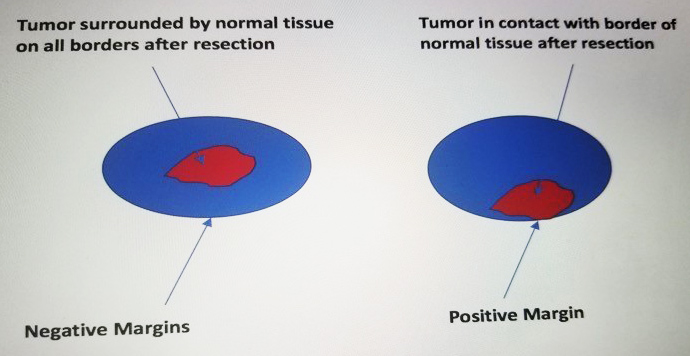Surgery for Primary Treatment
Surgery plays a vital role in the cancer treatment plan, especially in patients with solid tumors. Surgery is often used to attempt to complete removal of patients tumors that are localized at the time of the diagnosis. After definite cancer diagnosis, surgical operations are conducted to remove or destroy cancerous tissue. Unlike diagnostic surgeries which may remove a small amount of tissue to confirm the existence, determine the histology and in some cases stage of the disease, surgeries with intent to remove entire tumor take a much more definitive surgical approach, typically resulting in partial or total removal of the organ of origin. Depending on what is removed sometimes a reconstruction procedure is performed to improve appearance.
- Example: During a simple mastectomy or modified radical mastectomy, breast reconstruction may be possible during the same procedure. While a mastectomy is performed by the cancer surgeon, reconstructive surgery is usually performed by the plastic surgeon. Reconstructive surgery may also be delayed if it has the possibility of interfering with adjuvant treatment such as chemotherapy or radiation therapy.
There are surgery codes that capture the primary surgery and the reconstructive procedure in a single code in some instances. There are also codes that document other structures removed beyond the primary site.
In a procedure with an intent to eradicate the cancer, a certain amount of normal tissue as well as cancerous tissue is removed to obtain adequate margins. An area of normal tissue a distance around the cancer is removed in addition to the cancer to try and ensure that cancer cells near the tumor that are not visible are also removed, this added tissue is called the margin. The purpose is to minimize the risk of any cancer cells being left behind, which may result in a recurrence of the cancer. For the same purpose, the surgeon may also remove the lymph nodes that are adjacent to the tumor. The diagram below highlights the concepts of negative and positive margins.

Surgical resection depicting a negative surgical margin and a positive surgical margin.
Resection of isolated metastases (removal of solitary metastases) may be performed in some cases, at the time of primary site surgery and after there has been a disease-free interval of more than one year after the surgery.
For example, laryngectomy involves removal of tumors of the larynx which may include removing part of the larynx (voice box), or the entire larynx. When there is a total laryngectomy the person has a permanent stoma, there is no longer communication to the upper airway, and the patient is no longer able to speak normally and uses some artificial means of speech. Similarly, parathyroidectomy refers to a surgery to remove parathyroid glands or tumors.
En Bloc Resection
An en bloc resection is a surgical procedure in which a lesion and surrounding tissues are removed as a whole. "En bloc" or "in continuity with" means that all of the tissues were removed during the same procedure in one section.
Updated: December 21, 2023
Suggested Citation
SEER Training Modules: Surgery for Primary Treatment. U.S. National Institutes of Health, National Cancer Institute. Cited 30 December 2025. Available from: https://training.seer.cancer.gov.




